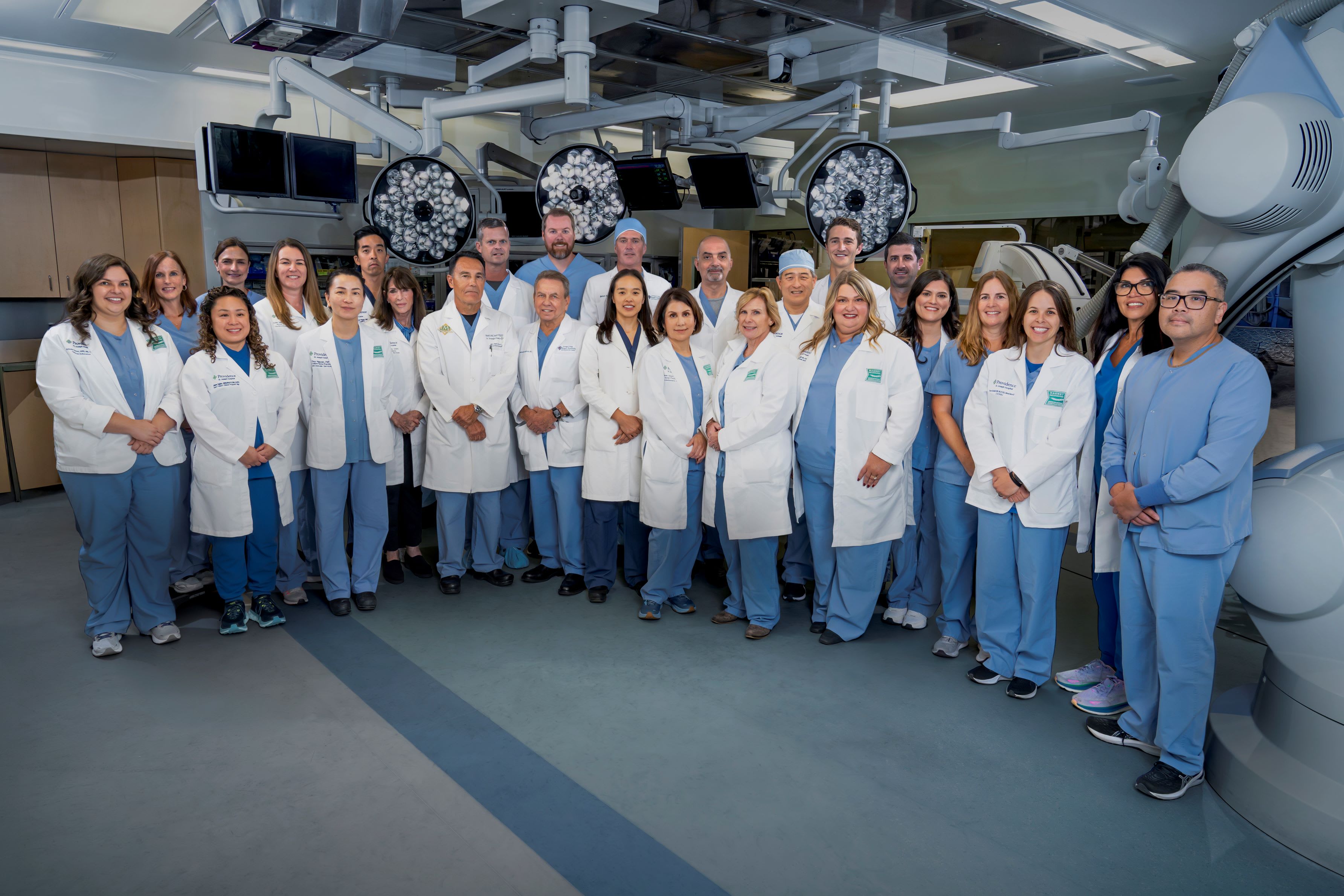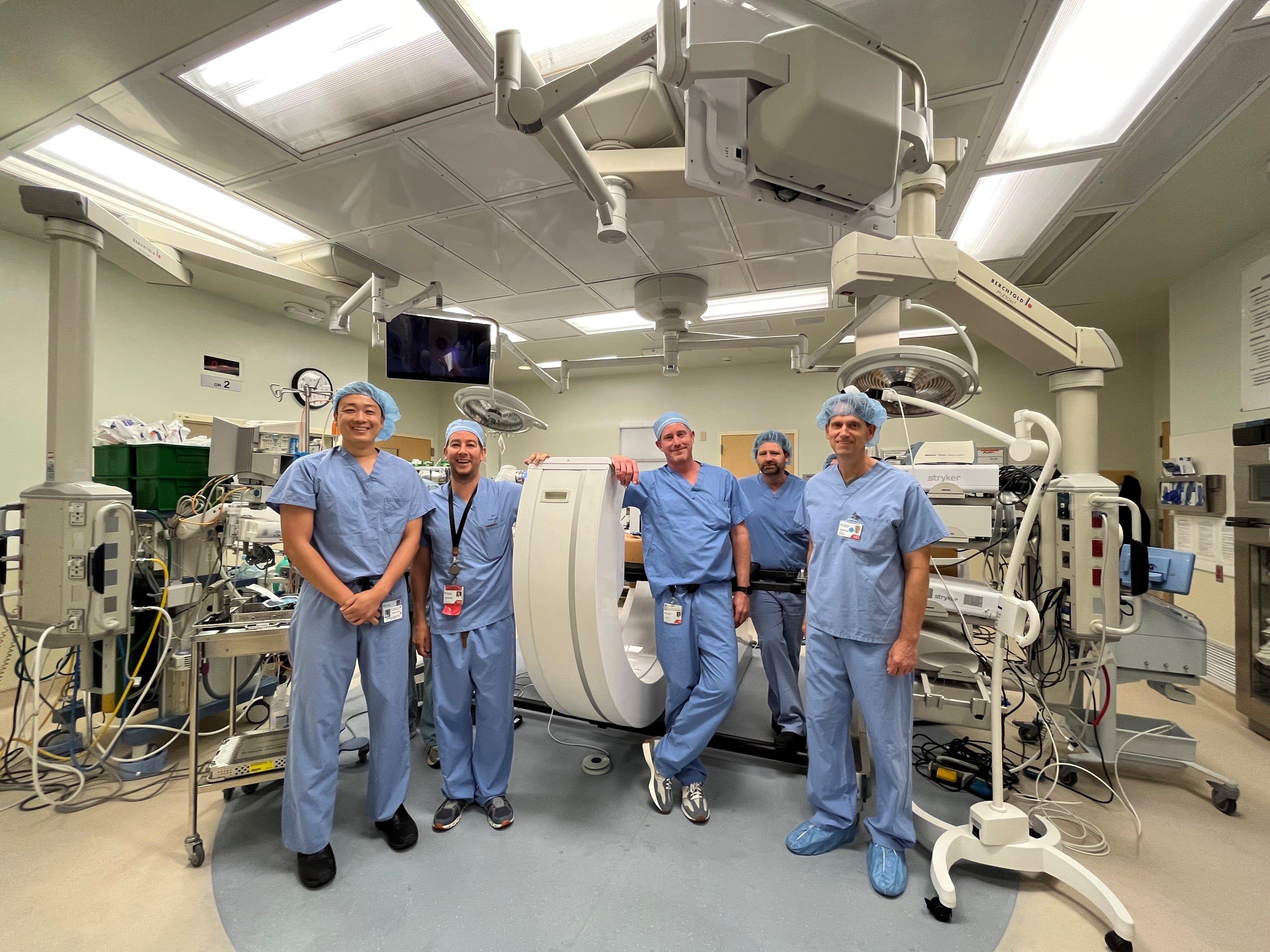ION Robot Offers Hope for Lung Cancer Patients
Brothers receive lifesaving diagnoses with advanced-tech tool.
As Paul Nguyen hit the local driving range, he had some bad news he needed to process. His doctor had just called about a recent CT scan of his chest that showed a problem. At 56 years old, he had become increasingly anxious about his health, as five of his close family members had been diagnosed with lung cancer.
The news prompted him to contact the Thoracic/Lung Cancer Program at Providence St. Joseph Hospital and discuss his options with program director John Maurice, MD, a thoracic oncologist at The Center for Cancer Prevention and Treatment. A few weeks later, Paul had a successful minimally invasive lobectomy to remove the cancer.
Paul's brother, Ngoc Nguyen, 75, a former smoker and a lung cancer survivor, also felt the call to get checked—especially since he’d also had tuberculosis, which can cause additional complications. Influenced by his brother’s successful surgery, he contacted Dr. Maurice as well.
The results of his initial scan were concerning. The imaging showed two suspicious nodules, so Dr. Maurice wanted to take a closer look using a new robot technology recently acquired by the hospital. Ngoc underwent Ion robotic navigational bronchoscopy. The bronchoscopy showed that “one of the nodules that was the most suspicious was inflammatory, and the other, which was actually unsuspected, turned out to be an adenocarcinoma,” says Dr. Maurice. Adenocarcinoma attacks the glandular cells of the body, including in the lungs.
"Using a needle biopsy through the skin, we would have only had the option to biopsy one spot at a time, which would have missed the cancer diagnosis,” says Dr. Maurice. “Ion has dramatically changed this man’s life.” With this knowledge, Ngoc will work with his physicians to determine the best course of treatment. Dr. Maurice was able to pinpoint the problem because the center had recently acquired the leading-edge Ion system for robotic navigational bronchoscopy, thanks to a generous philanthropic donation to the Providence St. Joseph Hospital Foundation. The Ion system is a critical tool for early diagnosis of lung cancer. Providence St. Joseph Hospital is currently one of approximately 30 cancer centers in the nation with this technology.
A POWERFUL TOOL
The screening system eliminates the need for invasive needle biopsies of the lung, which can be painful and complicated. The Ion system is a robotic platform that can visualize and execute precise, minimally invasive biopsies in some of the most hard-to-reach areas of the lung, where malignant cancers frequently begin. “The robotic dexterity is higher than human dexterity. It performs moves on a level that you can’t hope to do with the human hand,” explains Dr. Maurice. “It allows you to approach the target from a few different airways, giving you different options to perform your biopsy—a significant advantage over the current technique of biopsy, through the chest wall using a needle."
With standard diagnostic methods, physicians typically take just one approach, because each time a needle is inserted, it’s risking a collapse of the lung. Now they can make several biopsies to get a more accurate idea of what is happening inside. According to Brian Palafox, MD, a cardiothoracic surgeon at Providence St. Joseph, the Ion gives the individual another option to select from while being worked up for a nodule. “The final decision rests with the patient and the care provider,” he says.
WHY IT’S IMPORTANT
Lung cancer is the leading cause of cancer death among both men and women. Fewer than 20 percent of patients survive five years. However, when they are diagnosed at the earliest stage, the average five-year survival rate is 92%. The ability to accurately diagnose and treat malignant growths as early as possible can often mean the difference between a terminal diagnosis and a full remission.
Dr. Palafox sees a bright future for the technology, which may be able to implant medications and devices to help treat or cure early diagnosed diseases without surgery. “Ion is the beginning of a new diagnostic and treatment paradigm that will only improve as microtechnological advances occur,” he says.
And Dr. Maurice thinks that the technology may be applicable to other kinds of cancers in the future. “I think that the idea of using a natural orifice of the human body to perform biopsies is one that holds a lot of promise for many areas of the body,” he says. But the proof is in the results. According to Paul, who is already back on the golf course, “I love St. Joseph Hospital. The hospital care is awesome. And I’m especially thankful to have Dr. Maurice as my physician and surgeon."



